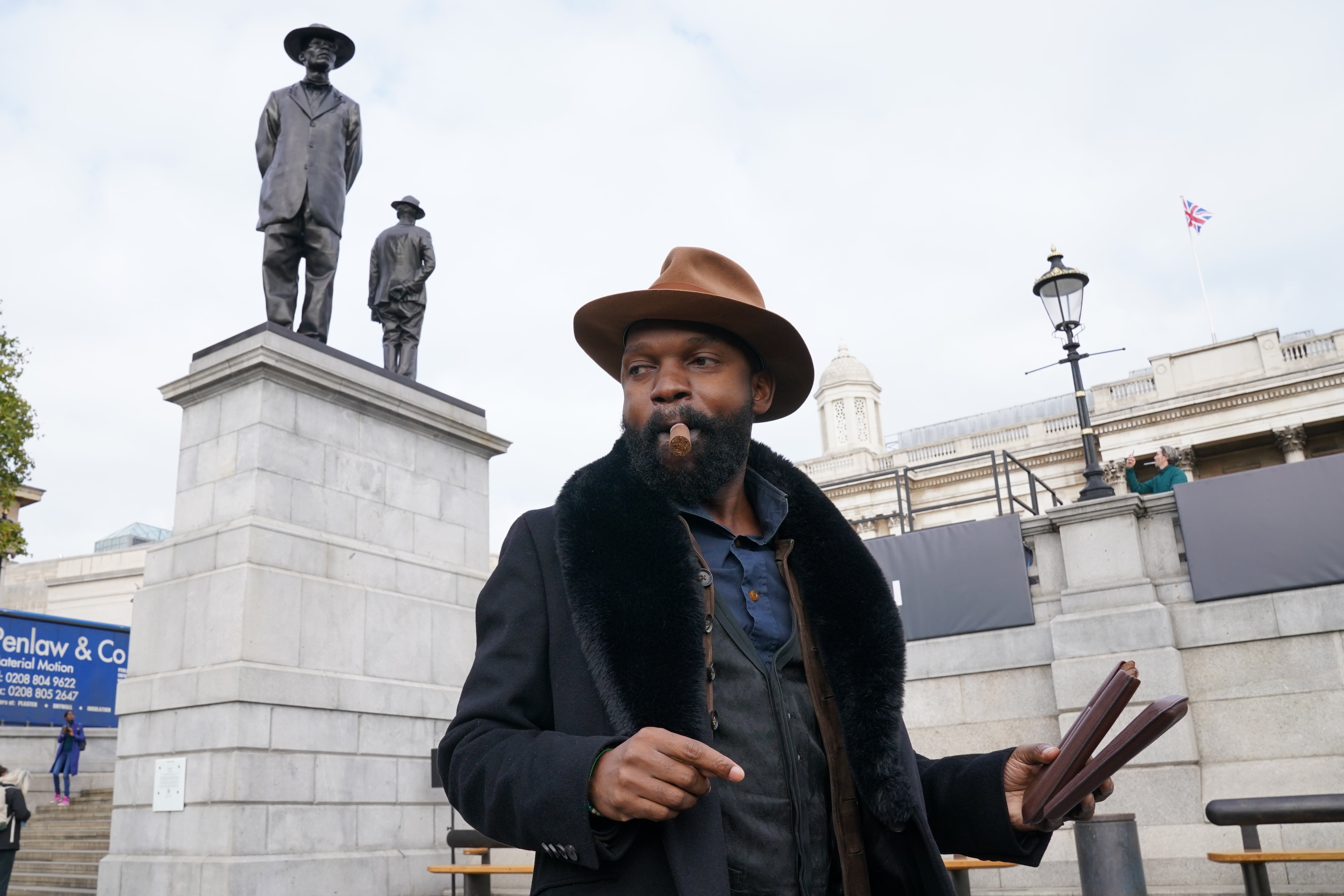Fourth Plinth artist say his sculpture represents standing up for justice
The sculpture was unveiled in central London on Wednesday.

Your support helps us to tell the story
From reproductive rights to climate change to Big Tech, The Independent is on the ground when the story is developing. Whether it's investigating the financials of Elon Musk's pro-Trump PAC or producing our latest documentary, 'The A Word', which shines a light on the American women fighting for reproductive rights, we know how important it is to parse out the facts from the messaging.
At such a critical moment in US history, we need reporters on the ground. Your donation allows us to keep sending journalists to speak to both sides of the story.
The Independent is trusted by Americans across the entire political spectrum. And unlike many other quality news outlets, we choose not to lock Americans out of our reporting and analysis with paywalls. We believe quality journalism should be available to everyone, paid for by those who can afford it.
Your support makes all the difference.Artist Samson Kambalu has said his new sculpture for the Fourth Plinth in Trafalgar Square represents “standing up for justice and equality”.
The Malawi-born artist’s piece, Antelope, depicts a 1914 photograph of European missionary John Chorley and Malawian Baptist preacher John Chilembwe, who fought against colonial rule.
Speaking at the unveiling of the sculpture in central London on Wednesday, Kambalu told the PA news agency that he was “glad” he could carry forth Chilembwe’s message of fighting for a better world.
The preacher died in 1915 in an uprising while fighting colonial injustices, one of which was the rule that forbade Africans from wearing hats in front of white people.
Kambalu explained: “Before the uprising he made a photograph with his friend, they were simply standing side by side wearing hats, and he distributed this photograph amongst his followers as a political stance to say ‘We are equal to white people so I can wear a hat in front of a white person’.
“Of course, he was killed months later, but his message lived on.”
The artist admitted that when he came across the photograph in an Oxford library he was not initially sure of why it was so significant but felt there was a message behind it, and when he was approached to submit a proposal for the Fourth Plinth he said he knew it would be the subject matter immediately.
Reflecting on what it means to have his sculpture stationed in central London, he told PA: “Chilembwe standing there, this sculpture represents not only standing up for justice and equality, but it also represents his own African heritage.”
Kambalu added that the title of Antelope alludes to the mask culture of the Chewa people, who reside in Malawi, and is a symbol of generosity.
“So he’s not only proposing equality and injustice, but he’s also proposing actually a radical economy right in the middle of the Empire,” he added.
The artist said he feels the metaphor of who gets to wear the hat today is still a pertinent question.
He said: “Hence, we have movements like Black Lives Matter, the George Floyd movement.
“His (Chilembwe’s) act of protest is still relevant today, and I’m glad that I can carry it forward.
“I can carry his message to contribute to the fight for a better world that’s still going on today.”
The sculpture was due to be unveiled earlier in the month, but it was delayed following the death of the Queen.
Last week, there were calls in the House of Commons for a statue of the late monarch to be erected on the Fourth Plinth instead in honour of her reign.
Previous Fourth Plinth commissions include Heather Phillipson’s sculpture The End, which depicted a whirl of cream topped with a drone and a fly; Marc Quinn’s sculpture of pregnant Alison Lapper and Yinka Shonibare’s scaled-down replica of HMS Victory, contained in a glass bottle.
Sir Antony Gormley also created One & Other, in which people – including a man who posed naked – took it in turns to spend an hour on the plinth.